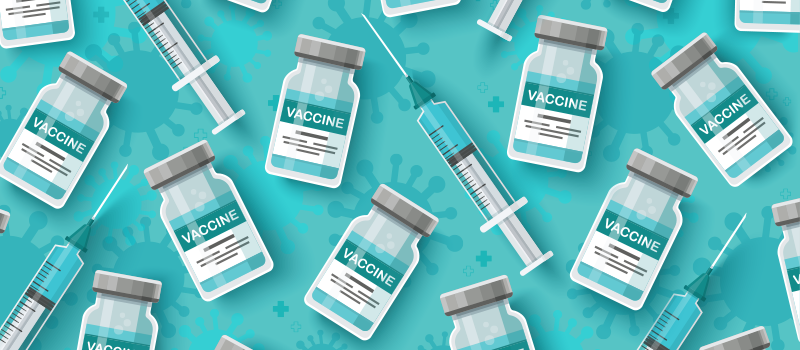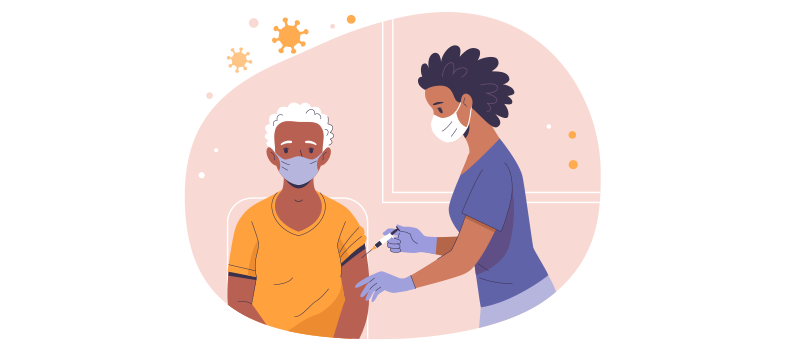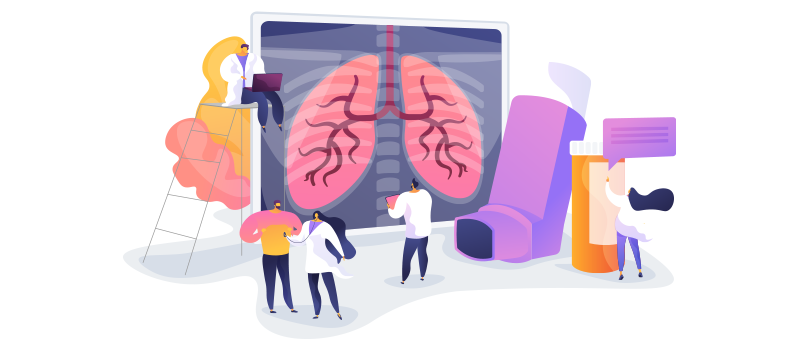Paxlovid Side Effects: What You Need to Know

Update: The federal government has funded Paxlovid for free for approximately 6 million Americans. In 2023, the government plans to stop paying for this life-saving medication. People may have to pay full price for this medication, and a large population of the uninsured and our elderly may not be able to afford this drug.
Pfizer’s COVID-19 pill, Paxlovid, has been found to reduce the risk of COVID-19-related severe illness, hospitalization, and death by 89% during a clinical trial. This risk reduction has been observed in unvaccinated high-risk patients with no previous infection who test positive for COVID-19 during the surge of the Omicron variant.
But like all medications, the oral antiviral drug Paxlovid can have side effects. Please continue reading to learn more about the side effects of Paxlovid, how this drug works, and who can take it.
What is Paxlovid?
Paxlovid is an oral antiviral medication that was granted emergency use authorization (EUA) by the Food and Drug Administration (FDA) in December 2021. This investigational medication is used to treat mild to moderate COVID-19 infection in adults and children 12 years or older weighing at least 40 kg (88 pounds).
Paxlovid is actually not the name of a medication; Paxlovid is the brand name of an antiviral regimen that contains two separate medications being packaged together - nirmatrelvir and ritonavir. Nirmatrelvir, a protease inhibitor, is the one that directly “attacks” the COVID-19 virus; it blocks the key enzyme required by this deadly virus to make copies of itself and continue invading healthy cells. Ritonavir’s role is to boost the antiviral activities of nirmatrelvir. Ritonavir, also a protease inhibitor, slows the metabolism (breakdown) of nirmatrelvir in the liver; this mechanism of action helps nirmatrelvir to stay in the body longer to fight the COVID-19 infection.
What are the criteria for a Paxlovid prescription?
Many people think they can only get Paxlovid through an infectious disease specialist. Paxlovid is a lot more accessible than you may think. Other healthcare providers, such as your primary care doctor, can prescribe Paxlovid as long as you meet the following conditions:
- Paxlovid is for adults and pediatric patients 12 years and older
- Weighing at least 40 kg (88 pounds)
- Having tested positive for SARS-CoV-2 virus
- Being at high risk for progression to severe COVID-19-related- illness, including hospitalization and even death.
Older age and other underlying conditions such as diabetes, cancer, and obesity can put you at high risk of severe illness when you contract the COVID-19 virus.
Is Paxlovid the only oral antiviral pill for COVID-19?
Paxlovid is not the only oral antiviral drug treatment on the market. Also in December 2021, shortly after Paxlovid, Lagevrio, manufactured by Merck, released another oral antiviral treatment that was authorized by the FDA.
During the initial randomized clinical trial, Paxlovid was found to reduce the risk of severe COVID-19 outcomes by 89% in unvaccinated people with no previous infection. In contrast, molnupiravir (Lagevrio) only reduces the risk of hospitalization and death from COVID-19 by 30%.
While Paxlovid is authorized to use in patients who are 12 years and older, Lagevrio is not to be used in pediatric patients (those who are less than 18 years old) because Lagevrio may affect bone and cartilage growth. One important fact to keep in mind is that the FDA also stated that Lagevrio should only be used when no other appropriate COVID-19 treatments are available.
In summary, beyond the initial clinical trial, real-world data also suggests Paxlovid’s superior effectiveness as it has been shown to reduce the risk of hospitalization and death by 70% in people who are at high risk of severe COVID-19-related illnesses. While this risk reduction for hospitalization and death is about 30% for Lagevrio. The difference in efficacy is one of the reasons why the FDA recommends Lagrevio for instances where other COVID-19 treatments are unavailable.
How does Paxlovid work?
Paxlovid contains 2 medications, nirmatrelvir and ritonavir. Nirmatrelvir works by stopping the virus from making functional copies of itself, while ritonavir helps boost antiviral levels. Ritonavir achieves this goal by stopping the metabolism of nirmatrelvir in the liver, in turn, ensuring that nirmatrelvir stays in the body longer to fight the infection.
Both nirmatrelvir and ritonavir are protease inhibitors. Interestingly, ritonavir was once used to treat HIV/AIDS.
When should I take Paxlovid?
For the medicine to be effective, you need to start Paxlovid within five days of COVID symptom onset. If you have been ill with COVID symptoms for more than 5 days, Paxlovid is unlikely to work.
How do I take Paxlovid?
Paxlovid is available in 2 dose packs with 2 different dosing regimens, and your doctor will choose the dose pack that is right for you. If you have kidney disease, your doctor will probably prescribe the lower dosing regimen.
With the standard dosing, each Paxlovid dose should be taken 2 times each day for 5 days; each of these doses contains 2 pink oval tablets of nirmatrelvir and 1 white oval tablet of ritonavir.
You should take all 3 tablets at the same time. Even if you feel better, you must complete the whole 5 days of therapy (a total of 30 tablets); do not stop taking this medication without asking your healthcare provider first.
Do not open the blister card and remove the tablets from it until you are ready to take the dose.
This medication can be taken with or without food. You should swallow them whole without swallowing, chewing, or crushing them.
With this medication, it is very important to follow instructions on what to do if you miss a dose. If you miss a dose, you have a maximum of 8 hours from the scheduled time to take that missed dose; for example, if you forget to take your 8 AM morning dose, you can take that missed dose any time before 4 PM. If it has been more than 8 hours, you should skip that dose and take the next dose at the scheduled time. Do not take 2 doses of Paxlovid at the same time to make up for the missed dose.
If you take too much Paxlovid, call your healthcare provider and seek medical care right away.
Before starting on Paxlovid, you should provide your healthcare provider with the most updated medication list, including prescription and over-the-counter products. Paxlovid can interact with several medications. For example, Paxlovid can make hormonal birth control less effective, you should use another method of birth control to prevent unplanned pregnancies.
If you are taking medications to treat HIV or hepatitis C, you should continue to take these medications as prescribed.
- Remove the Paxlovid tablets from the blister pack just before taking them.
- You can take Paxlovid with or without food.
- Swallow the tablets whole without breaking, crushing, or chewing them.
- Continue taking Paxlovid even if you feel well. Do not stop the medicine without talking to your doctor first.
- If you miss a dose of Paxlovid, take it as soon as you remember. However, if it is more than 8 hours from your usual scheduled time to take the medicine, skip the missed dose and take the next dose at the regular time. Do not take two doses together to make up for a missed dose.
- If you overdose on Paxlovid, call your healthcare provider without delay or go to the nearest emergency room.
- Tell your doctor if you feel worse or if you are no better after a 5-day course of Paxlovid.
What are the negative effects of Paxlovid?
You may have heard of the term “emergency use authorization (EAU)” or that Paxlovid is an investigational drug; many people are afraid to take these medications since they are not FDA-approved. However, a lot of people may not be aware that in order to approve a medication for emergency use authorization (EAU), the agency has to go through a rigorous process to determine that the benefits outweigh the risks and there are no available alternatives. This process often takes place when there is a public health emergency, such as the coronavirus pandemic.
One important fact to keep in mind is that Paxlovid has been well-tolerated by patients during clinical trials; below are some of the known side effects of Paxlovid, with dizziness, nausea, and diarrhea being the most reported:
- Altered sense of taste (metallic taste or bad taste) - also known as “Paxlovid mouth”
- Muscle aches
- High blood pressure
- Diarrhea
Other side effects and risks associated with Paxlovid medication use include:
Allergic Reactions
Rarely, Paxlovid can cause a rare but severe anaphylactic allergic reaction, causing hives, nausea, vomiting, and swelling of the lips, tongue, or throat; it left untreated, this can be fatal. This severe allergic reaction can occur after just one dose of the medicine. Stop taking Paxlovid and seek emergency medical attention if you develop skin rash, hives, trouble swallowing or breathing, swelling of the throat, lips, or face, tightness of the throat, or hoarseness.
Drug Interactions
Taking Paxlovid with certain medications can affect how the medicine works. In addition, many medications can cause serious and life-threatening side effects when you take them with Paxlovid. Before starting Paxlovid, give your health care providers a complete list of your medications, including prescription drugs, non-prescription drugs, supplements.
Paxlovid is contraindicated with certain medications, and you should not take Paxlovid right after stopping using these medicines; examples are St. John’s Wort, rifampin, certain seizures medicines, cancer drugs, and some medicines used for cystic fibrosis.
Reducing the effectiveness of hormonal birth control is another important interaction that you should be aware of.
Severe Kidney Disease
If you have kidney disease, Paxlovid may not be safe for you. Minor kidney injury may be acceptable; your doctor will let you know if you are a good fit for this medication.
Liver Damage
Tell your healthcare providers without delay if you develop stomach area pain, yellowing of the skin or eyes, itchy skin, pale-colored stools, dark-colored urine, or loss of appetite while taking Paxlovid. These are some of the hallmark signs of liver injury.
Future HIV Treatment
In people who have untreated or poorly controlled HIV infection, taking Paxlovid can cause resistance to HIV medicines that contain ritonavir; this can make certain HIV medicines not work as well to control HIV infection.
What can I expect after taking Paxlovid?
You can expect to have a milder COVID infection after taking Paxlovid, in addition to less risk of being hospitalized, becoming extremely ill, and even dying. This is provided Paxlovid is started within five days of symptom onset, after you test positive for COVID-19.
How common is rebound COVID infection after Paxlovid treatment?
There have been reports of a rebound effect between 2 to 8 days after finishing the 5-day course of Paxlovid. Most of us appreciate the convenience and so many other benefits that Paxlovid offers; so, naturally, the question regarding the prevalence of rebound COVID arises. Since this particular aspect is still being investigated, just as Paxlovid is still undergoing clinical trials and studies, there is no straight-forward answer to this question.
During the initial clinical trial, Pfizer reported that several participants who were on Paxlovid had rebound; however, this also happened with participants who were taking the placebo. In the initial study and recent data, the rate of COVID rebound is not high, and Paxlovid is not the only treatment that can cause it.
Some other findings from a recent study show that the risk of rebound COVID increases with time after treatment. People who develop rebound COVID-19 may also have other underlying medical conditions, have had an organ transplant, or are on immunosuppressant drugs. Tobacco use also increases this risk. This means high-risk patients with underlying medical conditions or severe disease are more vulnerable to rebound COVID-19 after taking Paxlovid.
In summary, more research is necessary to learn more about this adverse effect. If you think you have symptoms of rebound, let your doctor know right away.
References:
- https://www.fda.gov/media/155051/download
- https://www.ncbi.nlm.nih.gov/pmc/articles/PMC9258292/
- https://www.pfizer.com/news/press-release/press-release-detail/pfizers-novel-covid-19-oral-antiviral-treatment-candidate
- https://www.cdc.gov/mmwr/volumes/71/wr/mm7148e2.htm#:~:text=The%20initial%20randomized%20clinical%20trial,Omicron%20variant%20predominance%20
- https://www.hmpgloballearningnetwork.com/site/pln/news/hhs-expected-stop-paying-paxlovid-2023?hmpid=aHZ0bjIwMkBnbWFpbC5jb20=&utm_medium=email&utm_source=enewsletter&utm_content=1673328756
- https://www.ncbi.nlm.nih.gov/pmc/articles/PMC8755553/pdf/main.pdf
- https://www.fda.gov/news-events/press-announcements/coronavirus-covid-19-update-fda-authorizes-additional-oral-antiviral-treatment-covid-19-certain
- https://www.cdc.gov/mmwr/volumes/71/wr/mm7148e2.htm
https://www.fda.gov/drugs/emergency-preparedness-drugs/coronavirus-covid-19-drugs












SOCIAL